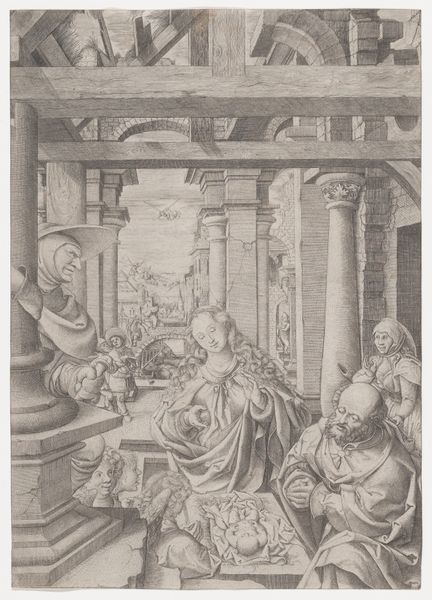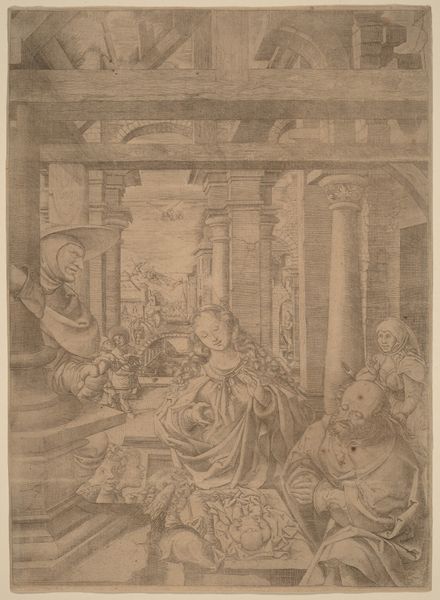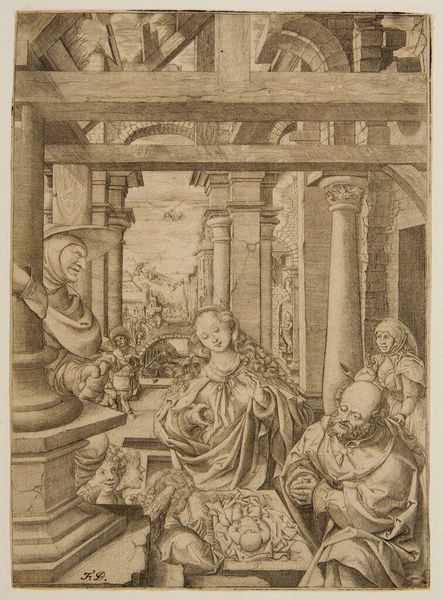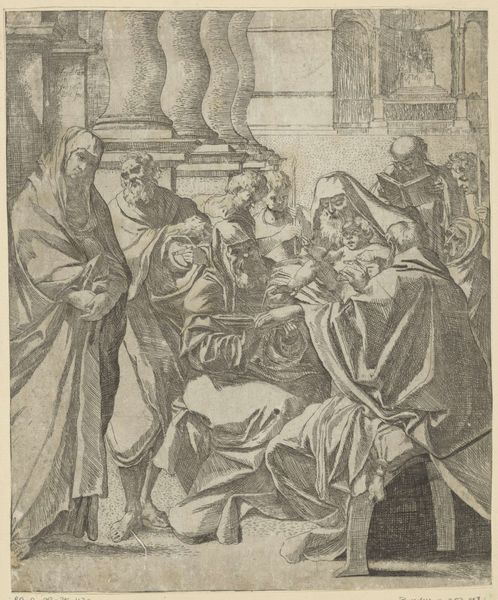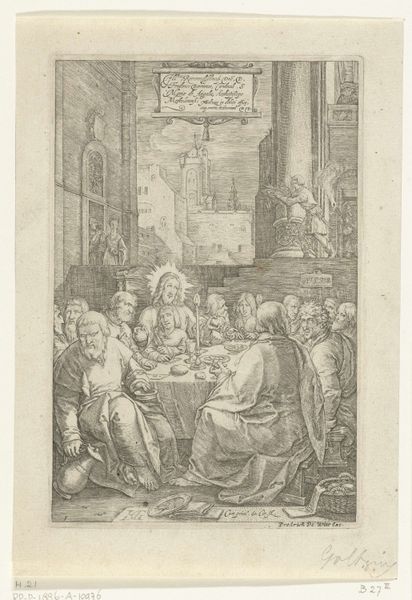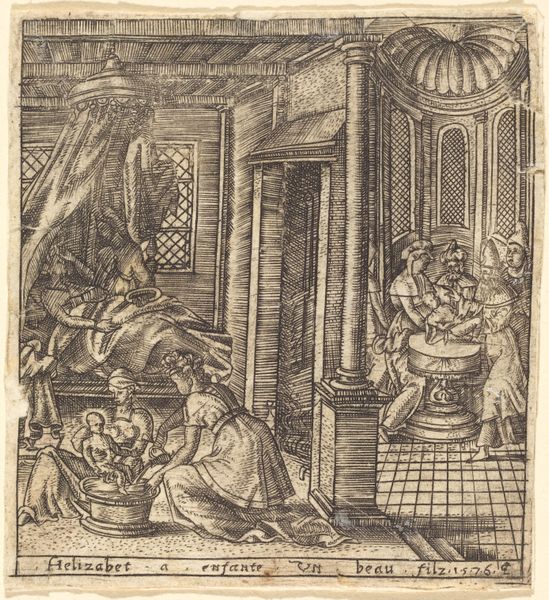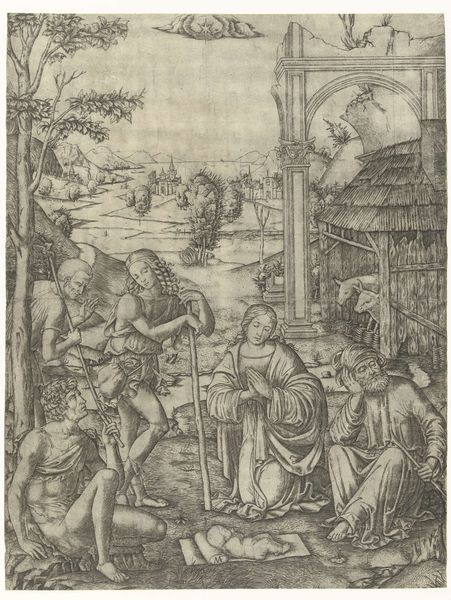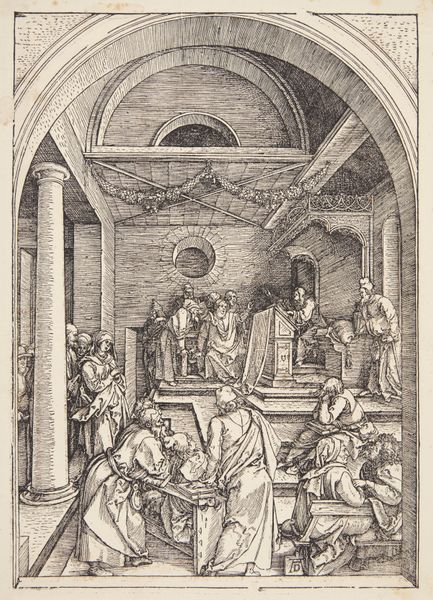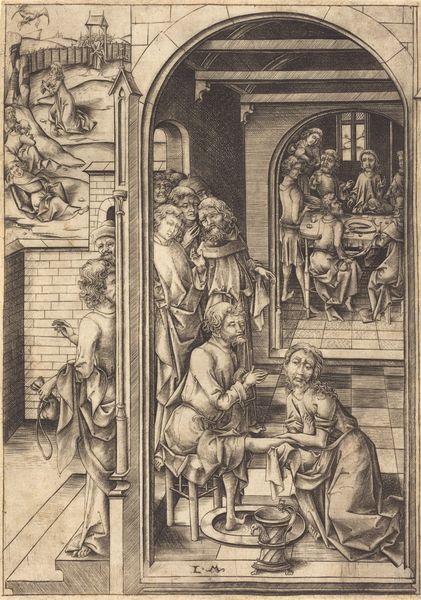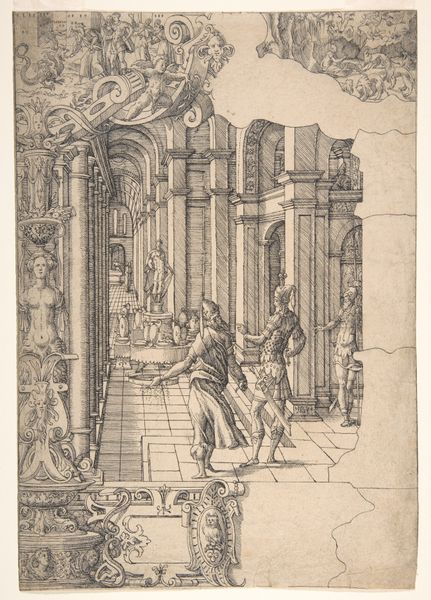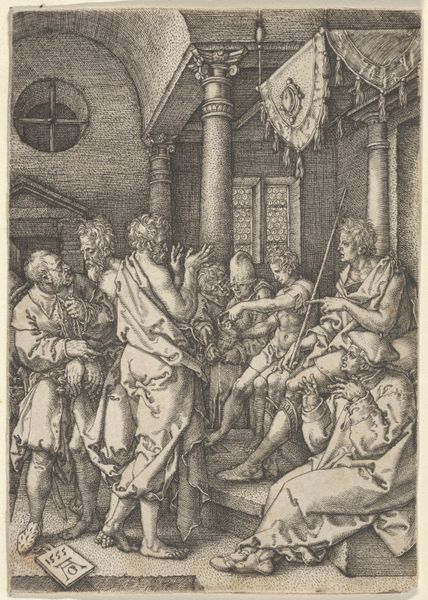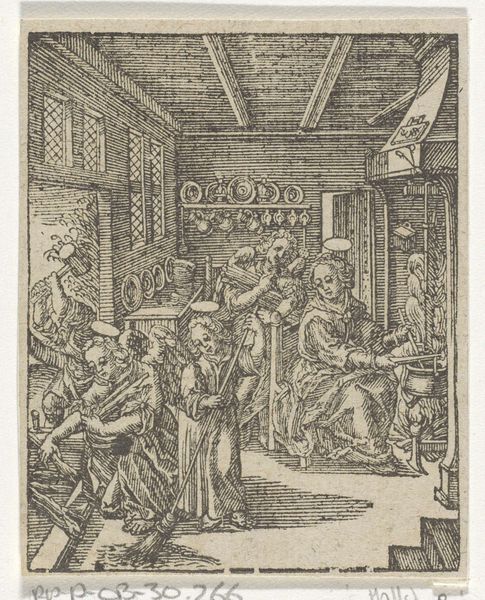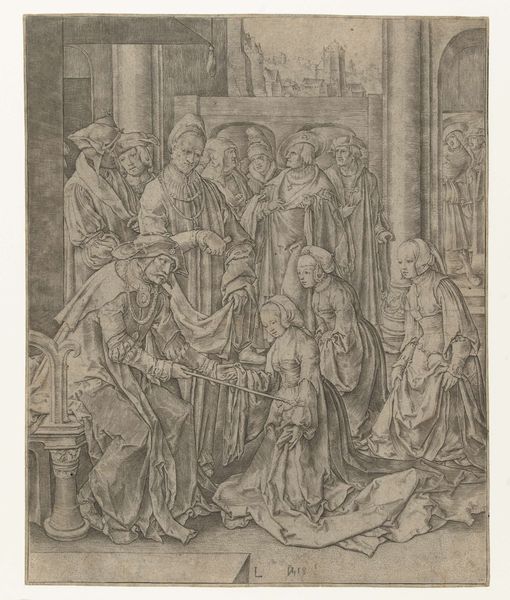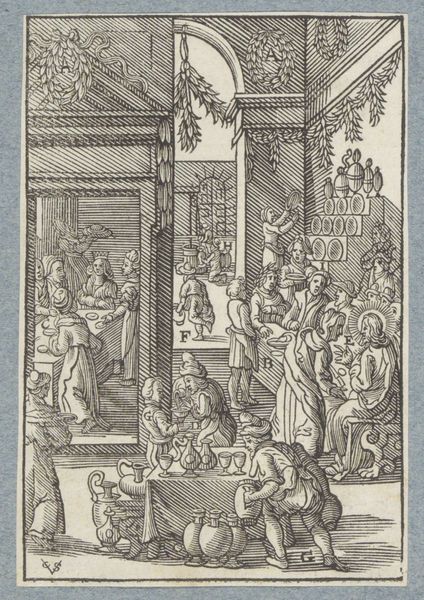
print, engraving
# print
#
11_renaissance
#
history-painting
#
northern-renaissance
#
engraving
Dimensions: height 244 mm, width 175 mm
Copyright: Rijks Museum: Open Domain
Curator: Here we have "Adoration of the Shepherds" by Frans Crabbe van Espleghem, created sometime between 1490 and 1552. It's an engraving, a print, a medium that allowed for wider dissemination of images during the Renaissance. Editor: The composition strikes me first. It’s quite theatrical. The strong vertical lines of the architecture alongside this hunched-over figure holding what looks to be produce draws you in, like stage curtains revealing a scene. Curator: Absolutely, and this scene is pregnant with theological significance. We see the Holy Family in the foreground—Mary, Joseph, and the infant Jesus. Then, if you look past that column, you'll notice angels announcing the birth, the shepherd offering, but this wasn't simply the story of Christian beginnings; these types of images often promoted values of humbleness or obedience amongst the less wealthy in Crabbe's contemporary society. Editor: Let's also consider the actual process of making this. Engraving is demanding. Each line you see was meticulously carved into a metal plate, inked, and then pressed onto paper. The craftsman's hand is quite evident in the precision of the lines but look closely—in areas the ink has bled around the edge of lines. Curator: Indeed. That technical detail enhances our understanding. Northern Renaissance prints often circulated independently of religious institutions to various social classes and regions. That type of spread aided to build community and collective identity in disparate lands during a crucial moment of cultural evolution in the Western world. Editor: I think looking closer, you also notice things like this shepherd figure and ask yourself: "What labor went into his donation? What kind of social structures made that labour and the giving itself, possible?" The image reminds me to examine a network of exchange of human needs alongside what is explicitly displayed. Curator: Very insightful. Analyzing such works allows us to explore socio-historical implications surrounding this story; a story about hope, sacrifice, labor and a challenge to the very definition of power. Editor: Examining how labor and skill become encoded, reveals more layers to consider alongside familiar stories from Western Canon. This changes our approach to how to analyze historical creation itself.
Comments
No comments
Be the first to comment and join the conversation on the ultimate creative platform.
